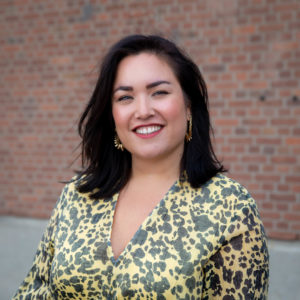The belief, assumption, or idea that there is a difference between human races and that they can be classified. This can lead to discriminatory systems in which one “breed” is treated differently by the other “breed”.
In 2020, racism unfortunately is still a topical and universal phenomenon. In times of a pandemic, protests are taking place all over the world – both online and in real life – : we are fed up with racism. But how do we eliminate racism from our society? Is that even possible? What do you think, is racism innate or taught? Read more about it in this article.
Our brain
Research by three Harvard psychologists (Contreras J.M, Banaji M. R, Mitchell J.P, 2013) has shown that our brain attaches great importance to skin color: we always register someone else’s skin color, whether we want it or not. Our brain always investigates the skin color of the person in front of us.
There is an explanation for this behavior of our brain: in prehistoric times, someone with different skin color was by definition someone from outside the own group and thus a potential threat.
Brown vs blue
So there is a part of our brain that is interested in skin tones, but that is not to say that there is an automatic judgment associated with the perception, such as an aversion to people of a different skin tone.
An example is the brown eyes versus blue eyes experiment (A Class Divided, 1968) by Jane Elliott. After the murder of Martin Luther King, Jane Elliott, a primary school teacher in the ‘white’ town of Riceville wanted to explain to her 10-year-old students why King was murdered. She decided to divide her class into two groups: one group consisted of children with blue eyes and one group consisted of children with brown-eyed children. First, the brown eyes were given privileges and compliments. The blue eyes, who wore a colored scarf, were belittled and did not have any privileges. What did Elliott notice? The brown eyes soon started behaving superior to the blue eyes. Then Elliott turned the tables: the blue eyes were given compliments and privileges and the brown eyes were belittled and stripped of their privileges. The former elite disappeared and the blue eyed-children developed into leaders. It turned out that this group had learned something: they had experienced what it is like to be treated less and therefore behaved less authoritarian towards the brown eyed-children.
Whether you can call this psychological experiment ethical or not, Eliott has written history: racism is not hereditary, it is taught through social conventions and prejudices. Racism has to do with power that unconsciously forces people into a certain role.
The solution?
We can no longer ignore or downplay the problem that racism is. It is time to talk about it on a larger scale. Racism is learned and that means that you can also unlearn it. Let’s educate and inform ourselves and the people around us. Let’s focus on solidarity, mutual respect, and equality rather than division, conflict, and hate.
Racism is something that has been learned. Just as we teach our children to count and to read, we should also teach them that there are different cultures and ethnicities, but that they are all equal. We are all equal.
Do you want to educate yourself and/or others but you don’t know where to start? Then take a look at these blogs that provide you with useful tips and lists:
- Navigating the complex subject of racism: this is how you make a start
- The effect of racism on your mental health and behaviour
Do you have any feedback or questions regarding this article? We would like to hear from you. Mail to community@niceday.app!











